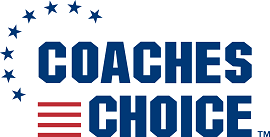Chris Paulson & Jeff Glessner via Coaches Choice Football Coaching Library
The Truth About the Spread Formation
An unsaid truth about the spread formation is almost never talked about. Maybe it’s not talked about because in today’s football world, people can’t fathom the triple option being run from any other formation. However, if the passing game through the spread isn’t consistently attacking the defense vertically and the offense doesn’t consistently attack the defense at all areas of the line of scrimmage, the spread is a very keyable offense. The same goes with the wishbone—except in the opposite direction. Without the triple option, it’s a poor formation because of principles of a formation and its plays. If a team doesn’t spend half its time perfecting its passing game with the spread, the team is running the wrong formation.
The advantages of the spread are lost when it’s only merely a running formation. If the offense consistently shows the defense a vertical passing game, the defense will defend those areas of the field. If not, the wishbone formation is the best at triple optioning. Along the same lines, if a strict adherence to maintain attacking all areas of the line of scrimmage doesn’t occur, the spread is a keyable formation. The reason is because of its use of quick motion. Motion is a good that can turn evil. That’s a huge key defenses can and will use against the offense.
Keeping the defense honest will make the offense sound. If the defense is unsound in its linebacker or defensive line play or is playing with unsound secondary rotation, a play will be open. However, not restricting the defense to these plays will make running the spread suicide against teams that are only out to stop the triple option. Even though the wishbone requires the same adherence to attacking all areas of the line of scrimmage because of stagnant backfield play, it’s a better formation. The spread formation can magnify the wishbone’s original principles, but straying away from these principles will make it an easy offense to figure out during the course of a game.
The Truth About the Pistol Formation
Fads come and go, and in today’s football world, the fad is the pistol formation. It’s the hip new thing everybody’s excited about. However, most of that excitement is just the fact it’s something new, not something that’s theoretically sound. The reason for the pistol and the triple option being protection has always been a problem for teams who are under center, especially double slot spread teams who have wide splits that the defense will take advantage of. The main reason for the pistol and the spread being married is pass protection.
Too many coaches want to run the pistol because it’s what’s new, but if that’s the reason they line up in the pistol, then they’ll fail. They’re not doing something with philosophy or theory on their side. They’re doing something because they’ve been talked into being modern in today’s football world. A subject in football that’s rarely talked about is the importance of pass protection. It’s pretty simple: A coach can draw up all the cool-looking pass plays in the world. At the end of the day, if the quarterback has no protection, the play won’t work.
A vast majority of football coaches neglect pass protection because it’s a dry subject to talk about. Most offensive coaches coach offense because they love the intricacies of offense. Most offensive line coaches love pounding defenses into submission, so it’s understandable why most coaches neglect pass protection. But it must be understood that pass protection is the number one priority whenever the offense is throwing the football and that pass protection is everyone’s responsibility.
The pistol spread option activates the entire field. It’s true that if a team wants to fully utilize the advantages of the gun, the pistol spread isn’t the best option. It’s easier to protect the quarterback when he’s at five yards instead of three. But that’s the sacrifice of running this particular offense. The triple and midline are much more effective under center and an all-out passing game is better with the quarterback five yards behind the center. However, three yards is the happy medium where the quarterback can effectively run the triple and midline while having better pass protection than under center.
It’s true that critics can say this offense is sacrificing too much to marry two ideas. But the success of this offense speaks for itself. Sacrifice a little bit of the running game by starting the quarterback three yards behind the center with the tailback in a two-point stance at five and sacrifice a small portion of the passing game by having the triggerman line up two yards closer than he normally would. The point being is that the marriage starts with the importance of pass protection. Lining up in the pistol isn’t a perfect answer nor is it the best theoretical answer for pass protection, but combining the best of the under-center option game with the benefits of good pass protection is the goal of this offense.
Sound pass protection must be preached from day one. The truth is, if the passing game is used as something to completely attack the defense—especially out of the pistol spread—it’s the wrong thing for the offense to do. The reason for the spread formation is to attack the defense
vertically and keep it honest—theoretically and philosophically—against the option game. However, operating out of the pistol gives a small extension of that attack. Being able to throw quick passes along with a drop back passing game can amplify an offense as long as it’s not long or extensive in a West Coast–style manner and is strictly used as a constraint on a defense.
You can find out more about and purchase the eBook that this article is from at: Coaching the Pistol Spread Option Offense
